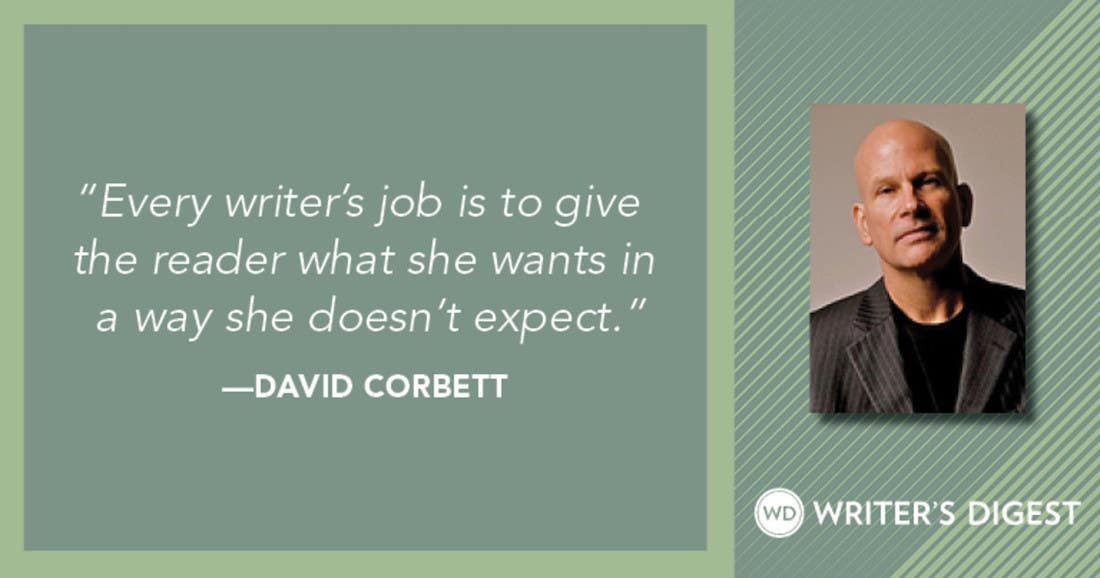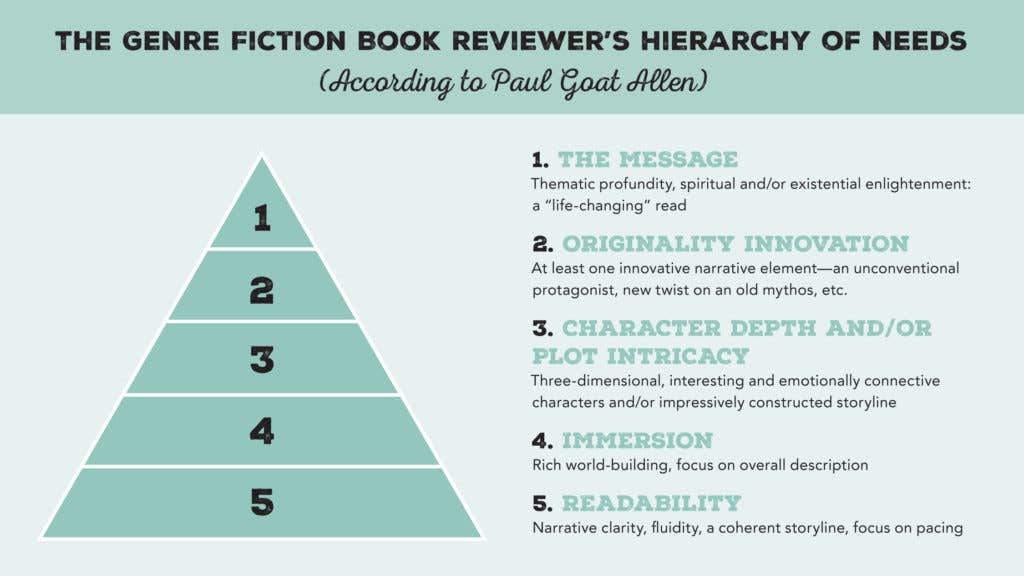Author Platform Building: How to Create a Valuable Email List For Your Book
Your email list can be your single most valuable marketing tool. Learn the hows and whys of building and growing your own roster—and putting it to work for you.
If I could point to one external factor that has had the biggest positive impact on my career as an author, it would be my email list—and I’m far from alone. Most writers today know they should probably have an email list, but misinformation and confusion abound about what exactly that list should entail, why it’s so crucial and, of course, what to do with it.
Order a copy of Gabriela Pereira's DIY MFA: Write with Focus, Read with Purpose, Build Your Community.
Why You Need an Email List
The Internet is always changing. From Facebook to Foursquare, Pinterest to Periscope, it sometimes seems as if a new social media platform pops up every minute. Who can keep up? The beauty of email is that it’s evergreen. While websites, forums and social networks might come and go, email has solidified its place in how we communicate.
Email is a direct line between you and your readers. There’s no “middleman” to get in the way. In a digital world where social networks change their algorithms, sites get hacked and servers crash, direct communication is invaluable. You can export that list and take it with you wherever you go. As long as you build that list correctly, it’s yours and no one can take it away from you.
The connection you make via email has the potential to be far more personal than sending a tweet or posting on your blog. Email lets you talk directly to readers as individuals. You become a welcome presence in their inboxes, where you’ll find a higher level of engagement. Email list subscribers aren’t just people who might pick up your book and read it someday. Many will become dedicated fans who happily receive (and read) your messages every time you send them.
How to Create Your List
To set up a list of your own, simply follow these steps.
Step 1: Choose a system.
First, choose an email system. This is not a piece of paper with a list of addresses on it. It’s not a Google Form or other online survey where your readers enter their email addresses. And it’s definitely not that widget you add to your website that says, “Get blog updates via email.”
To build your email list the right way (and comply with anti-spam laws), you must use an email marketing software (EMS) system. That’s a fancy term for a simple system that allows you to collect email addresses and send messages to the people on that list. An EMS also allows you to set auto-responses or schedule a sequence of messages in advance.
Leading EMS systems include:
MailChimp (mailchimp.com): A popular choice, MailChimp is user-friendly and free up to 2,000 subscribers to any given list, but can get pricey after you exceed that limit. Also, integrating it with wordpress.com websites can be tricky.
Aweber (aweber.com): Reliable, known for customer service, and fairly inexpensive, this system is slightly more advanced than MailChimp, but easy to learn.
Constant Contact (constantcontact.com): This system offers add-ons (for additional fees) that provide more hand-holding than MailChimp or AWeber. Try before you buy with a free 60-day trial.
Infusionsoft (infusionsoft.com): Offering integrated email and shopping carts, this service is powerful but expensive, and has a steep learning curve.
convertkit (convertkit.com): Equipped with a user-friendly interface, great customer service, and integration with major shopping carts and blogging platforms, ConvertKit will even handle your migration from another EMS (with certain plans).
Step 2: Put the form on your blog or website.
Once you have selected your EMS system and completed the basic setup, the next step is to place a sign-up form on your website inviting readers to join. Follow the simple instructions to design the form in the EMS system you’ve chosen, then insert the embed code on any page of your site that allows for HTML. I recommend these optimal locations (choose one, all or a combination):
In the home page header or just below. This is the most highly trafficked and visible area of your website. If most of your visitors come to your website via the home page, it’s essential to have an email form here (though if your newest blog post doubles as your home page, you can sidestep this option and put your email form at the top of the sidebar).
In the sidebar. Depending on your site’s design, visitors who click to a subpage or blog post through an outside link may not see the sign-up form in the header. This is why it’s also smart to include a form in the sidebar, preferably at the top.
In the footer of each post or page. This might not be the most visible area of your website, but visitors who take time to read an entire post and then sign up will be more committed and engaged.
Dedicated “squeeze page.” This page exists solely to house your email form. Here, emphasize the benefits of joining—what readers will get when they sign up. You can also include a few testimonials about your work or blurbs about your book. Then link directly to this page (keep the URL simple: yourwebsite.com/join or /newsletter) in your social media profiles, email signature, author bio, etc.
Step 3: Offer incentives for opting in.
One of the best ways to entice people to sign up is by offering a freebie that readers can download as soon as they join—say, a sample chapter of your latest book, deleted scenes or other bonus content.
A good opt-in offer will feel valuable to your readers while also providing an immediate benefit. Choose something that is useful or entertaining, but also fast to consume and leaves them wanting more. Your goal is to deliver great value but also build a relationship with your subscribers so they will want to keep hearing from you.
Step 4: Welcome new subscribers.
Most EMS systems allow you to create an automated welcome email that will go out as readers confirm their subscriptions. Use this email to deliver your freebie, but realize, too, that its impact extends far beyond the opt-in offer itself.
Your welcome email lets you set the tone for all subsequent communications. Use it to establish expectations so subscribers know exactly what they will receive from you going forward. Let them know how you’ll send emails or newsletters, what kind of information you’ll share and anything else key to your message.
Finally, consider asking subscribers to reply to you with an answer to a specific question. Ask them about their favorite books, or ask something that relates to your own book or subject matter. For instance, if you write dystopian young adult fiction set in a world with various factions, you might ask your readers which faction they would belong to if they lived in that world, and why.
While only a small number of subscribers may reply, these answers can give you insight into your readers, offer a chance to genuinely connect and even inspire future newsletter content. With an email list, most of the communication goes from you to your readers, but encouraging your readers to message you can create a more interactive and personal relationship.
How to Stay Connected
Once your list is set up and subscribers have started to join, all you have to do is continue the connection. Some authors send email only when they have news about their books, upcoming signings or events, a new byline to share, or something else to promote. Others send regular newsletters on a monthly basis, or even less frequently.
Personally, I’ve had success with my own list (at DIY MFA) by challenging this paradigm. If you email your readers infrequently, subscribers might forget about you altogether. When they finally hear from you and all you do is promote your next book, they may unsubscribe or, worse, mark your email as spam. Think of your emails as opportunities to offer continued value to your subscribers. Don’t wait too long to send updates. I’ve found it beneficial to email my subscribers every week or two.
Don’t let this schedule scare you, or feel pressure to go overboard creating new material for your newsletter. Instead, think of your list as an extension of your overall online strategy. Find creative ways to expand on content you’ve already created for your blog or social media, but up the ante and offer more value via email.
Remember that subscribers have invited you into their inboxes. They are not random visitors dropping by your website; they want to engage with you on a deeper level. If you’re smart about your content strategy, you don’t have to drive yourself crazy to give these committed fans a little something more. (See the sidebar at left for ideas.)
If handled correctly, an email list of loyal subscribers can become one of the most valuable assets of your author platform—one that allows you to connect with your most loyal readers. These are the people who will buy (and actually read) your work, recommend your books to friends and attend your signings. Not all of your subscribers will be die-hard fans, but some will. Treat them like gold.
Gabriela Pereira is an author, speaker, and self-proclaimed word nerd whose book DIY MFA: Write with Focus, Read with Purpose, Build Your Community shows you how to recreate the Master of Fine Arts experience without going back to school. As the founder and instigator of DIYMFA.com, Gabriela’s mission is to empower writers to take an entrepreneurial approach to their education and professional growth. She earned her MFA in creative writing from The New School and teaches at national conferences, local workshops, and online. She also hosts the podcast "DIY MFA Radio," where she interviews best-selling authors and book industry insiders about the art and business of writing.








